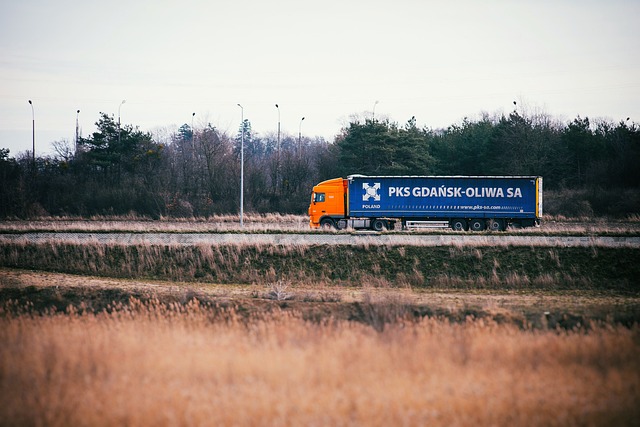Multi-truck liability policies are essential for transportation companies to manage risks and costs, offering tailored insurance solutions for multiple truck accidents. To maximize benefits, firms should integrate these policies into a safety-first culture, enhancing fleet management, driver training, and maintenance. This proactive approach reduces incident rates, fosters employee safety consciousness, improves road safety, and leads to lower insurance premiums over time by implementing robust safety programs and continuous improvement.
In today’s world, minimizing risks is not just a best practice—it’s a cost-saving necessity, especially for trucking operations. To achieve significant savings on liability insurance premiums, building a safety-first culture is paramount. This article guides you through the process of understanding multi-truck liability policies and their pivotal role in risk mitigation. We’ll explore strategies to foster a safety-conscious workforce, implement robust training programs for drivers, and continuously refine safety protocols—all key steps to lower insurance costs effectively.
Understanding Multi-Truck Liability Policies and Their Role in Risk Mitigation

In the transportation industry, understanding multi-truck liability policies is a cornerstone of risk management and cost optimization. These specialized insurance policies are designed to address the unique challenges posed by multi-vehicle operations. By covering liabilities arising from accidents or incidents involving multiple trucks, these policies play a pivotal role in risk mitigation. They not only protect businesses from substantial financial losses but also contribute to a safer operational environment.
When implementing a safety-first culture, companies should consider multi-truck liability policies as a strategic tool. This involves evaluating fleet management practices, driver training programs, and maintenance routines to identify areas for improvement. By proactively enhancing safety measures, businesses can significantly reduce the likelihood of multi-vehicle incidents, ultimately lowering their insurance premiums over time.
Laying the Foundation: Cultivating a Safety-Conscious Mindset Among Employees

Cultivating a safety-conscious mindset among employees is the cornerstone of building a culture that prioritizes safety and, consequently, lowers multi-truck liability policies costs. This involves fostering an environment where every employee understands their role in preventing accidents and mitigating risks. Regular training sessions, clear communication channels, and open dialogue about safety protocols are essential tools to achieve this. When employees feel empowered to report unsafe practices and conditions, it leads to a more proactive approach to hazard identification and mitigation.
Encouraging a culture of continuous learning and improvement further reinforces the importance of safety. Providing resources for employees to stay updated on industry best practices, new regulations, and advanced safety technologies demonstrates a commitment to reducing liabilities. By involving employees in the process of identifying and addressing risks, organizations can create a shared sense of responsibility that goes beyond mere compliance, cultivating a genuine dedication to safety across all levels of the workforce.
Implementing Comprehensive Safety Programs and Training for Truck Drivers

Implementing comprehensive safety programs and training for truck drivers is a strategic move towards cultivating a safety-first culture within transportation companies. This proactive approach not only enhances road safety but also significantly reduces the risk of accidents, which translates to lower multi-truck liability policies costs. By integrating rigorous driver training, regular vehicle maintenance checks, and advanced safety technologies, companies can foster a mindset where every journey is prioritised for safety.
These measures include but are not limited to, defensive driving techniques, hazard perception training, and regular reviews of safety protocols. Equipping drivers with the knowledge and skills to navigate hazardous situations reduces the likelihood of accidents caused by human error. Moreover, utilising telematics and other monitoring systems allows companies to track driver performance, enabling them to quickly identify areas for improvement and reinforce safe practices.
Continuous Improvement: Monitoring, Evaluating, and Adjusting Safety Protocols to Lower Insurance Costs

Building a safety-first culture goes hand in hand with continuous improvement, especially when it comes to managing insurance costs. Regular monitoring and evaluation of safety protocols are essential steps in this process. By closely examining existing practices, companies can identify areas for enhancement and implement more robust measures. This proactive approach ensures that safety standards align with industry best practices, potentially reducing the risk of accidents and claims.
Adjusting safety protocols based on these evaluations is crucial to lowering multi-truck liability policies costs. Staying agile allows businesses to adapt to evolving regulations and new insights into workplace safety. Regular adjustments ensure that safety programs remain effective and relevant, contributing to a safer work environment and substantial savings on insurance premiums over time.
By implementing a safety-first culture, businesses can significantly reduce their liability insurance costs associated with multi-truck operations. Through fostering a mindset of safety consciousness among employees, comprehensive training programs, and continuous improvement initiatives, companies can navigate the intricate landscape of risk mitigation effectively. Understanding multi-truck liability policies and their role in this strategy is key to unlocking substantial savings while ensuring the well-being of drivers and the overall operation. This proactive approach not only enhances financial stability but also contributes to a safer and more resilient trucking industry.
